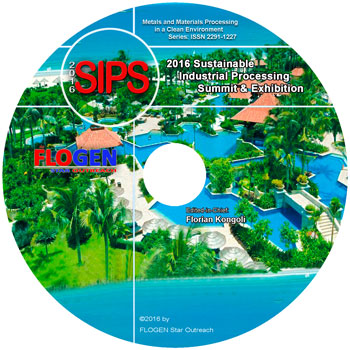2016-Sustainable Industrial Processing Summit
SIPS 2016 Volume 7: Yang Intl. Symp. / Multiscale Material Mechanics
| Editors: | Kongoli F, Aifantis E, Wang H, Zhu T |
| Publisher: | Flogen Star OUTREACH |
| Publication Year: | 2016 |
| Pages: | 190 pages |
| ISBN: | 978-1-987820-48-5 |
| ISSN: | 2291-1227 (Metals and Materials Processing in a Clean Environment Series) |

CD shopping page
Permanent Magnets for Sustainable Energy Applications.
Michael Coey1;1SCHOOL OF PHYSICS, Dublin, Ireland;
Type of Paper: General Plenary
Id Paper: 513
Topic: 42
Abstract:
Permanent magnets create a magnetic field in their surrounding space with no continual expenditure of energy. An electromagnet producing a flux density of 1 Tesla in a volume V = 500 cc for 10 years will consume roughly 1011 Joules of electrical energy, costing about $2000. A permanent magnet flux source does the same job for free. Although not much energy stored is in the magnetic field � �B2V/�0 is just 200 Joules � the energy is in a particularly useful form and it provides the basis of highly-efficient permanent-magnet energy converters, both electric motors and generators.
The fundamental physical limits on magnet performance will be reviewed, including energy-product a figure of merit, and recent progress in magnet development will be assessed. Prospects of discovering a higher-performance magnet than Nd-Fe-B are dim, but a significant challenge is to develop a magnet with an energy product intermediate between those of Nd-Fe-B (energy product up to 450 kJm-3) and hard ferrite (energy product up to 45 kJm-3) that is economically viable in terms of raw materials costs and stability of supply. Some potential solutions will be discussed.
A single application, traction motors in all-electric vehicles, could see the current demand for Nd-Fe-B of 100,000 tonnes per year triple over the next decade if a significant fraction of the 35 million cars produced annually were replaced by electric vehicles. There will be a corresponding demand for end-of-life recycling of the magnet material. Direct-drive wind turbines, and microscale energy-harvesting applications are other areas where permanent magnets offer sustainable solutions.